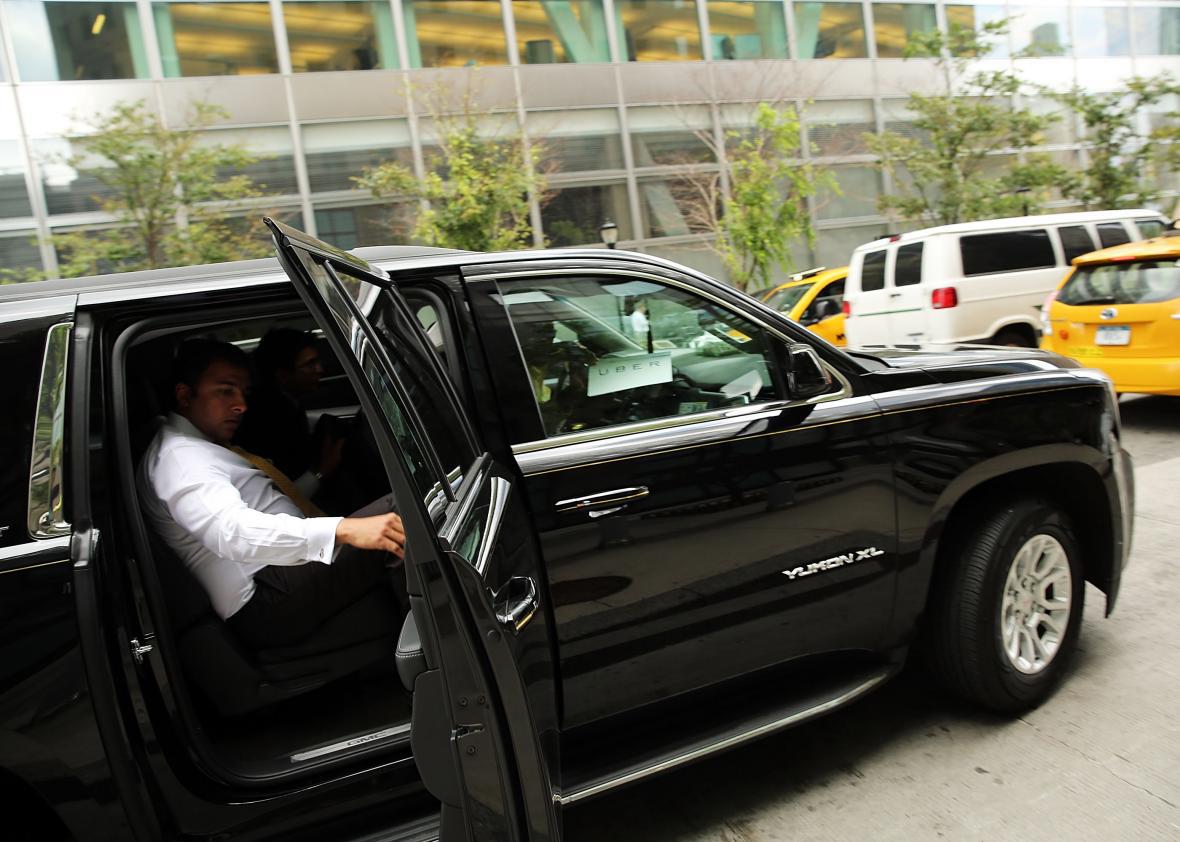On Tuesday afternoon, Uber will begin offering a limited number of prepaid, multiweek passes to Manhattan commuters willing to share rides with other passengers. It’s another step in the company’s journey from taxi competitor to something akin to mass transit—one that, for a moment at least, puts Uber’s services in price competition with New York’s subways and buses.
Styled after transit agency deals for frequent commuters and sold exclusively through the online clothing retailer Gilt City, the UberPool Commute Card gives buyers unlimited shared trips during the morning and evening rush hours for a fixed price.
For $79, for example, the four-week card gives a user as many shared UberPool trips in Manhattan below 125th Street as he or she can take, from 7 to 10 a.m. and 5 to 8 p.m. Monday through Friday.* If you commute twice a day with UberPool, it comes out to less than $2 a ride.
That’s cheap. It’s cheaper than the company’s current UberPool policy, which prices all shared, rush-hour rides in southern Manhattan at a flat $5. For some Manhattanites, the discounted Commute Card (which was also available via a presale on Monday) would also be cheaper than subway and bus transit passes. If you used an MTA 30-day MetroCard just for commuting, it would amount to $2.65 per ride. An Uber Commute Card would be more than 20 percent cheaper.
Obviously, the services aren’t analogous. The inaugural Commute Card is a one-off, a partnership designed to introduce customers to UberPool services during the quieter summer months, and to drive Gilt City membership. The taxi-network company has no plans to sell permanent passes for daily riders. And yet: The idea of a Commute Card is the latest in a string of Uber rollouts that hint at the company’s approach on the traditional territory of urban mass transit.
First came UberPool, which allows passengers with similar routes to join up for a cheaper ride. In Boston, the company introduced a “Pool pass” pilot program in July, selling passengers prepaid passes for 20 or 40 rides.
And now, in addition to the $5 flat rate for rush-hour travel in Manhattan, UberPool in New York momentarily includes a transit-style unlimited ride pass that signals Uber’s desire to capture the routine of the commute. For Manhattan’s $5 UberPool, riders walk to and from pickup points. It’s like catching the bus.
In Seattle and Toronto, Uber runs UberHop, in which taxis function a bit like their counterparts in the cities of the developing world. For a flat-fare, you jump in a cab along one of a set of popular routes. In Toronto, all routes connect to the Financial District, the downtown office hub.
There’s reason to feel optimistic about UberPool’s competitively priced effort. The most enticing possibility is that the service will draw in large numbers of people who would otherwise take a cab alone. New Yorkers like a deal, and if UberPool can compete on convenience, the price differential should be a strong lure.
In fact, a little more doubling up in taxis could have a huge effect on the city’s traffic congestion. According to an MIT study from 2014:
If New Yorkers were willing to share a taxi with just one other party, and tolerate a maximum of 150 seconds of additional travel time, approximately 70 percent of NYC cab rides could be shared. Taxi travel time would drop by 25 percent. The total distance traveled by New York City cabs would fall by 40 percent, relieving traffic, reducing air pollution and speeding up travel for everyone else on the road.
That calculation, performed with data from a 2011 New York cab-tracking experiment, shows what might be possible with a little more carpooling.
That’s what happens if UberPool pulls its riders from cars, anyway. The flipside of that thought experiment is one in which new UberPool riders come from subways, buses, and bikes, and demand for shared cars grows faster than demand for solo cars declines, clogging avenues with double-parked cars awaiting commuters.
Of course, if traffic gets so bad, you’d figure some of those people might just get back on the train.
*Correction, July 11, 2016: This post originally misstated that UberPool Commute Cards allow Manhattan riders below 125th Street unlimited rides between 5 a.m. and 8 a.m. The unlimited rides are available between 7 a.m. and 10 a.m. and between 5 p.m. and 8 p.m.
